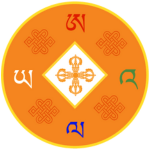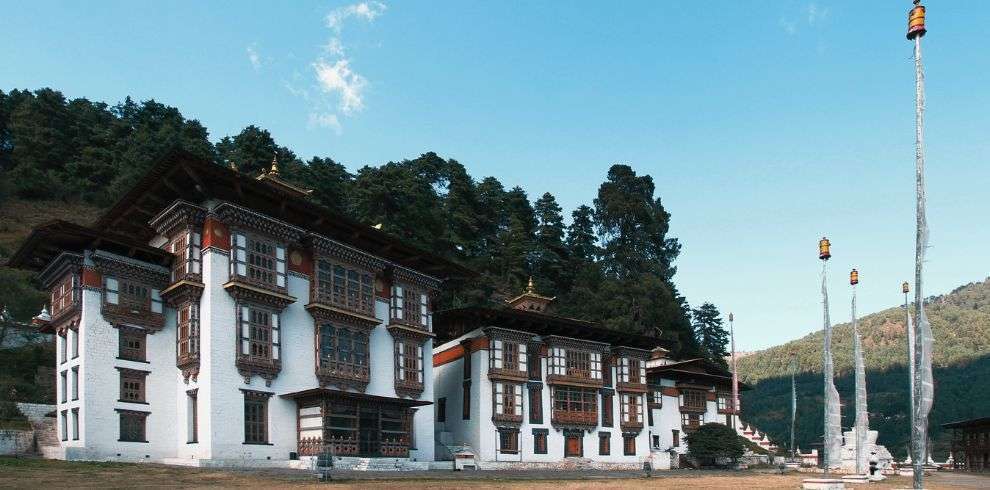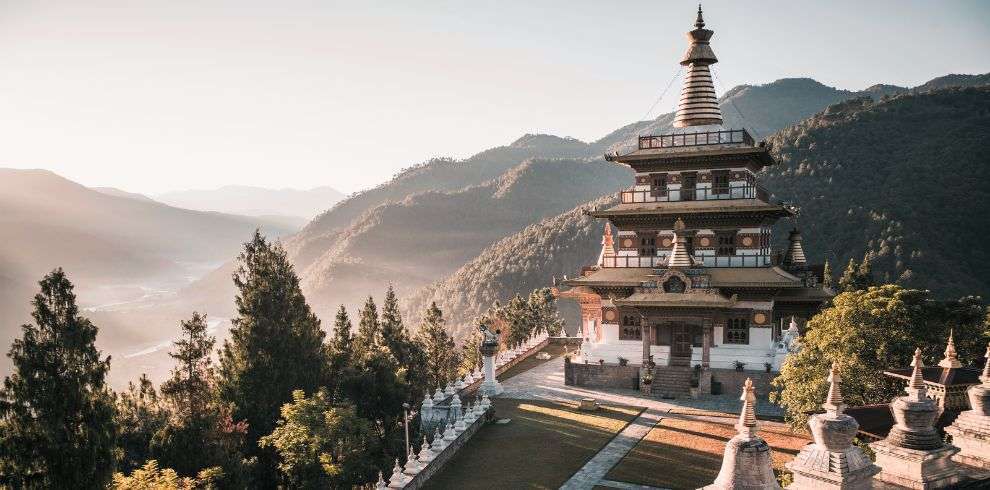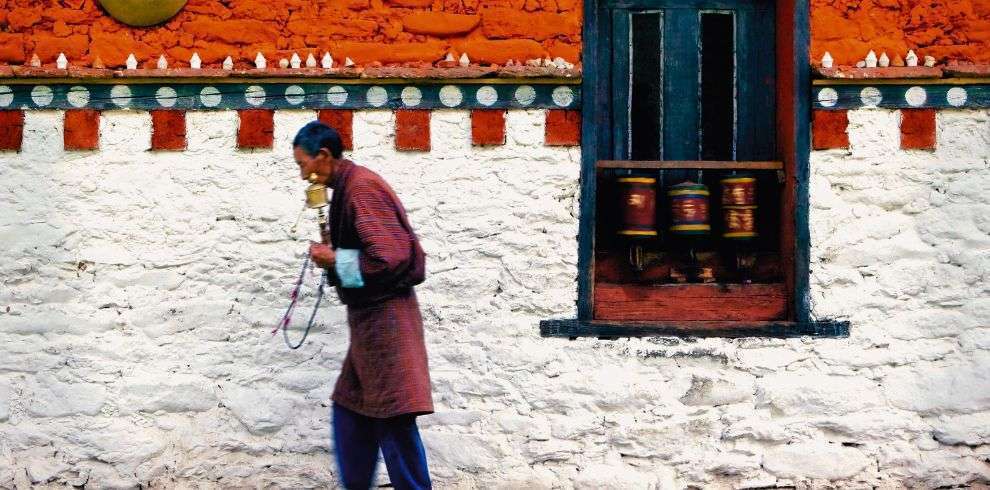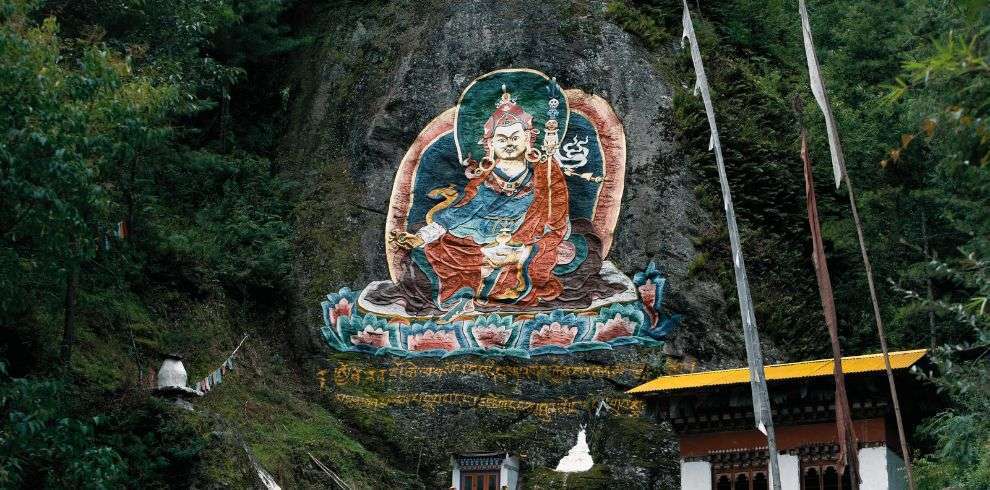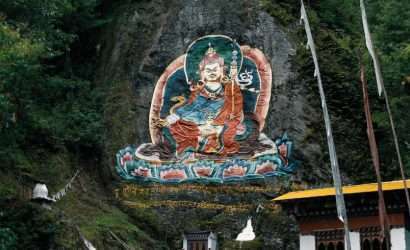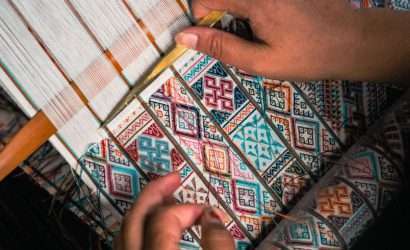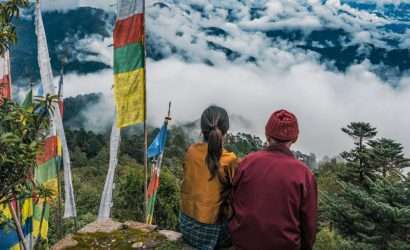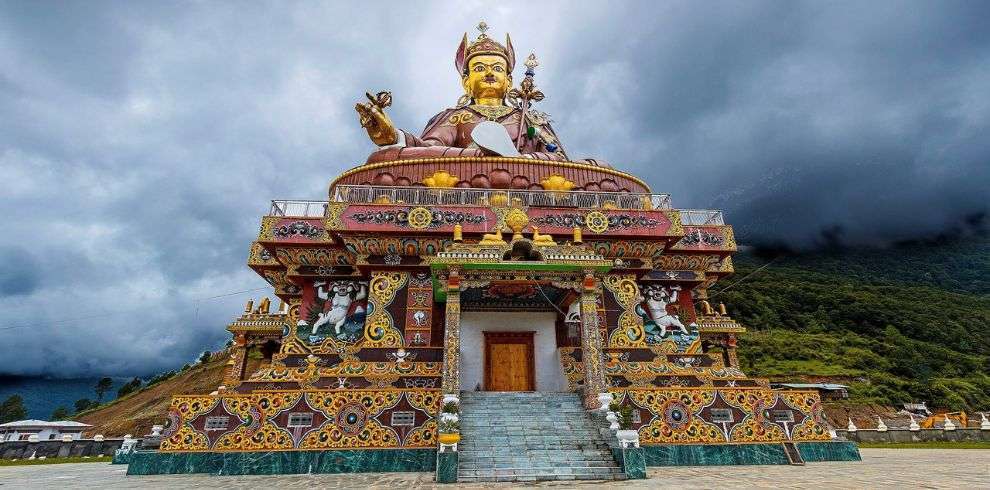This pilgrimage tour is a perfect trip for people who want to know more about Buddhism in Bhutan and how it manifests in everyday village life. Hike to monasteries, meet with monks and lamas and enjoy a short meditation retreat in a very remote hermitage.
This tour promises the Guests with astounding results. In doing this tour, you will witness symbols and object of phallus. Phallic objects – carved or painted – are found all over Bhutan. Beyond these facades, the phallus symbolism is at the root of Bhutanese culture. They are used as amulets of luck, antidote against curse, harbingers of prosperity and to bestow fertility to barren couples. This tour will take you to visit to Bumthang the spiritual heartland of Bhutan where 7th century old temples can be seen still vivid connecting with abundance history of Vajrayana Buddhism flourished and coexist peacefully. You will experience all its spiritual richness, besides understanding the life of the happiest people on this earth.
Overview
This Pligrimage tour takes you to various meditation temples and other attached places for cleansing the minds from renowned Buddhist practitioners and other masters thereby warding off distractions.
This tour promises the Guests with astounding results. In doing this tour, you will witness symbols and object of phallus. Phallic objects – carved or painted – are found all over Bhutan. Beyond these facades, the phallus symbolism is at the root of Bhutanese culture. They are used as amulets of luck, antidote against curse, harbingers of prosperity and to bestow fertility to barren couples. This tour will take you to visit to Bumthang the spiritual heartland of Bhutan where 7th century old temples can be seen still vivid connecting with abundance history of Vajrayana Buddhism flourished and coexist peacefully. You will experience all its spiritual richness, besides understanding the life of the happiest people on this earth.
Itinerary
During the journey to Paro, one will experience from the left-hand side of the plane breath taking views of Mount Everest, Kanchenjunga and other famous Himalayan peaks, including the sacred Mount Chomolhari and Jichu Drake in Bhutan.
On arrival at Paro International Airport, you will be received by representatives of ALAYA who will escort you to the hotel. Discuss and make necessary changes along with Tour Guide.
Overnight: Hotel in Paro
The drive to Thimphu (Capital) through the winding road along the Paro and Thimphu river takes about 2 hrs. The distance is 65kms. On the way, 6kms before reaching Thimphu visit the Simtokha Dzong (Dzong means Fortress). Simtokha Dzong is one of the oldest Dzongs in Bhutan. It was built in 1629 A.D. by Shabdrung Ngawang Namgyel the founder of Bhutan, and was the first Dzong to be built by him. Check in at the hotel. Lunch at the hotel.
Afternoon: Visit the Memorial Chorten (a huge Stupa) built in memory of the third King of Bhutan who reigned the Kingdom from 1952-1972. Visit the Handicrafts Emporium where Bhutanese textiles and various other arts and crafts are displayed and can be purchased. Visit Tashichho Dzong the main secretariat building. This massive structure houses part of the Government Ministries, the office of the King and the Throne Room and the office and the living quarters of the Monk Body and its Chief Abbot.
Overnight: Hotel in Thimphu.
Visit the National Library where a vast collection of ancient manuscripts are preserved. Visit the Painting and wood craft school where children are taught the traditional art of wood craft and painting. Lunch at the hotel.
Afternoon: Pilgrimage and hour-long meditation at Thimphu’s Nunnery centre the Zilukha Nunnery.
Overnight: Hotel in Thimphu.
After an early breakfast, drive to Punakha and Wangdiphodrang. On the way, halt at Dochula Pass 3150mts. (26kms) for a hot cup of tea/coffee and to enjoy the most spectacular view of the Eastern Himalayan mountain ranges. (possible on a clear day). Punakha was the former capital of Bhutan. The Punakha Dzong lies between two rivers known as Phochu and Mochu which means “Male River and Female river “. It is one of the most important Dzongs in Bhutan and now houses the District Administration office of the Punakha district and the winter residence of the Monk Body and its Chief Abbot. It was built in 1637 A.D. Wangdiphodrang lies 13kms from Punakha. The Wangdiphodrang Dzong and its small town is perched on a hill between two rivers. This Dzong also houses the District Administration office of the Wangdi district and the office and the living quarters of the district monk body. The Dzong was built in 1638 A.D.
Overnight: Hotel in Wangdue.
After breakfast walk to the famous Devine Madman’s Monastery The Chhimi Lhakhang “No Dog Monastery”? built in 1499. Today it is very popular because couples who are married for so many years and don’t have childrens but always desired go there and get blessed from the wodden Phallus and in another Nine months the wife gets pregnant.
We will visit the monastery and meditate and picnic lunch will be served outside the monastery in a lush green ground. After Lunch drive to Punakha and visit the beautiful and legendary Khamsum Yuley Namgyal Monastery built by Her Majesty the Queen mother of our Crown Prince.
Overnight: Hotel in Wangdue
After an early breakfast, drive to Trongsa (142kms). The journey takes about 6 hrs with lunch stop on the way. After crossing Pelela at 3340 mts. Decend down to Rukhubji and then to Chendibji where your lunch will be served and circumambulate the Nepalese Style Stupa built in 15th Century.
Morning visit the Trongsa Dzong and the Watch Tower.The Trongsa Dzong was the ancestral home of the ruling dynasty. It is also the district administration office of the Trongsa district. It was built in 1648 A.D. The landscape around Trongsa is spectacular, and for miles on end the Dzong seems to tease you so that you wonder if you will ever reach it. Backing on to the mountain and built on several levels, the Dzong fits narrowly on a spur that sticks out into the gorge of the Mangde River and overlooks the routes south and west. The view from the Dzong extends for many kilometers and in former times nothing could escape the vigilance of its watchmen.
Furthermore, the Dzong is built in such a way that in the old days, no matter what direction a traveler came from, he was obliged to pass by the Dzong. This helped to augment its importance as it thus had complete control over all east-west traffic. The Ta-Dzong, an ancient Watch Tower of the Trongsa Dzong is located on top of a steep hill about 1 km beyond the Trongsa Dzong. The watch tower displays many interesting armors used by the Bhutanese soldiers during the olden days. Lunch at the hotel and leave for Bumthang. The Journey takes about 3 hrs (68kms.) and is over one of the most scenically beautiful routes in Bhutan.
Check in at the Guest house. (Bumthang has only guest houses but they are very comfortable with good facilities.)
Visit the historical Jakar Dzong built by Minjur Tenpa, the third Druk Desi (Temporal ruler) in 1646 A.D. It was later repaired and expanded by Gyalse Tenzin Rabgay, the fourth Desi of Bhutan in 1683 A.D. It is probably one of the biggest Dzongs in Bhutan with the surrounding walls about 1 km in circumference.
Visit several ancient and important monasteries such as, Jambay Lhakhang, Kurjey Lhakhang, Kencho Sum Lhakhang, Tamshing and Pema Samba Lhakhangs. Also visit the Bumthang Swiss farm and the Member Tso ” The flaming Lake ” which is considered one of the most important pilgrimage spots.
Overnight in the guest house.
Visitors can drive up to Ura and take a leisure stroll in the clustered village of Ura. Ura has a beautiful Buddhist Monastery surrounded by typical Bhutanese farm houses which is worth seeing.
You will also see yaks grazing in the rich pasture land of the Ura valley. Pack lunch in Ura and return to Bumthang in the evening.
Overnight in the guest house.
After an early breakfast, drive to Gangtey. 174kms from Bumthang. Overnight in Gangtey. Gangtey is a beautiful place situated at an altitude of 3000m.
From Gangtey, one can closely view the picturesque black mountain ranges as well as the beautiful Phobjikha valley which is one of the biggest and the most beautiful valleys in the country. During winters, we can also see the famous Black Necked Cranes there.
Overnight in the guest house.
After breakfast drive to Paro (190kms.) Lunch on the way at Thimphu.
Overnight: Hotel in Paro.
Drive to Drugyal Dzong (a ruined fortress – 16kms from Paro town). Although in ruins, this Dzong is of great historical importance. It was here that the Bhutanese finally defeated the invading Tibetans and drove them back. From here, the peak of Mount Chomolhari ” Mountain of Goddess ” can be seen on a clear day. Lunch at the hotel.
Afternoon: Visit the National museum (“Ta-Dzong”). This was actually the Watch Tower of the Paro Rinchen Pong Dzong. It was converted into the National Museum in 1968. It is located on the top of a hill above the Paro Dzong overlooking Paro valley and the river. Visit Rinpung Dzong. This massive fortress is located in the Paro valley and is approached by a gently sloping flagstone road and a beautiful wooden bridge roofed with shingles and abutted by two guard houses. Today, the Dzong is the Administrative seat of the district of Paro and it also contains a state monastic community of about 200 monks. The central tower (“Utse”) of the Dzong is one of the most beautiful in Bhutan with its superb woodwork. The Dzong was built in 1646 A.D.
After an early breakfast, drive up to Satsam Chorten (10kms) for a short trek to Taktsang Monastery. The name Taktsang means “Tiger’s Nest.” The monastery is perched on a rocky ledge with a sheer drop of nearly 900m and overlooks the Paro valley and the river.
It is said that in the second half of the 8th century, Guru Padma Sambhava known as the second Buddha in Bhutan, meditated at the spot where the monastery is situated having alighted there on the back of a flying tigress. Picnic lunch at the Taktsang cafeteria. The round trip hike takes about 4 hrs.
Drive to Paro International Airport and see off by your Guide and Driver.
The Trip Cost Includes
- Department of Tourism’s certified 3 star Standard hotel accommodation twin sharing room;
- All Meals.
- USD 100 nightly SDF Fee (Sustainable Development fee) that goes for free education and health care for the citizens of Bhutan and tourist alike.
- Tourism Council’s certified Professional English speaking Cultural tour guide.
- Comfortable Toyota/Hyundai Tour Vehicle with Tourism Council’s Certified Driver.
- Mineral Water
- Domestic travel insurance.
- Entry Fees to museums, cultural monuments and fortresses.
- Visa/Permit process.
- USD 40 Visa fee
The Trip Cost Excludes
- Any airfare.
- Any cost of excess baggage/weight.
- Tips to the guide and driver.
- Beverage, alcohol, laundry and any personal nature expenses.
Annapurna Base Camp is a Grade B or a moderately difficult trekking route. So any fit person can do this trek, even if you do not have any previous experience. You should be aware of what to expect and mentally prepare for it. Then, as long as you will to, you can.
On average, you walk about 4 to 6 hours per day. One or two days can be as less as 3hrs and one or two days can be as long as 7hrs.
The highest altitude reached is 4190m. This is the elevation of Annapurna Base Camp. ABC is the highest we will climb in this trek.
Yes, you can charge batteries en route. Charger should be brought. There are hot shower facilities as well. You may have to pay certain amount for both ($1-$2). Negotiate. Also, hot water facility could be free at lower elevation.
No. There are no ATMs on this trek route. You will have to draw enough cash in Pokhara or Kathmandu. There are a number of ATMs in these cities. Everything is paid in Nepali rupees. So money should be exchanged before the start of the trek.
Yes. Internet can be accessed in most places. Sometimes, there might be some technical problems. Internet in Nepal is not as fast as you are used to and at times you can just lose connection.
Not really. It depends on you. If you want, ABC trekking can be done independently. You could hire a guide and a porter by yourself instead of going through an agency or not hire a guide at all. Although, not having a guide can be a little problematic during off season.
It really depends on you. Is it your first time in Nepal? How confident are you of being able to find your way around? How pressed on time are you? If you go through an agency, it will be costlier but everything will be planned. You will only have to come, trek and return.
For Annapurna region, pay for guides range from $20 to $30 per day and porters take $15 to $25 per day.
